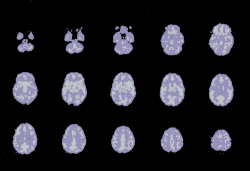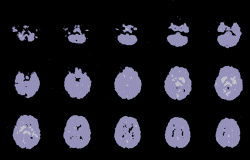
|
Navigate |
| Home |
| Kirstie Alley |
| Our 30th Anniversary |
| Never Turning Back |
| Narconon Endorsements |
| |
|
|
| |
|
|
| |
|
Facts About Drugs |
| FAQ About Ambien |
| FAQ About Ativan |
| FAQ About Cocaine |
| FAQ About Codeine |
| FAQ About Crack |
| FAQ About Darvocet |
| FAQ About Dexedrine |
| FAQ About Demerol |
| FAQ About Dilaudid |
| FAQ About Ecstasy |
| FAQ About GHB |
| FAQ About Heroin |
| FAQ About Hydrocodone |
| FAQ About Ketamine |
| FAQ About Lortab |
| FAQ About LSD |
| FAQ About Marijuana |
| FAQ About Morphine |
| FAQ About Meth |
| FAQ About Methadone |
| FAQ About Opiates |
| FAQ About Opium |
| FAQ About Oxycontin |
| FAQ About Percocet |
| FAQ About Percodan |
| FAQ About Ritalin |
| FAQ About Rohypnol |
| FAQ About Ultram |
| FAQ About Valium |
| FAQ About Vicodin |
| FAQ About Xanax |
  |
|
Resources |

|


 Print this article |  Send this article to a friend |  Add to Favorites |
FAQ
About Ecstasy
Q.) What is Ecstasy?
A.) MDMA or ecstasy is a Schedule I synthetic, psychoactive drug possessing stimulant and hallucinogenic properties. Ecstasy possesses chemical variations of the stimulant amphetamine or methamphetamine and a hallucinogen, most often mescaline. Commonly referred to as Ecstasy or XTC, MDMA was first synthesized in 1912 by a German company possibly to be used as an appetite suppressant. Chemically, it is an analogue of MDA, a drug that was popular in the 1960s. In the late 1970s, MDMA was used to facilitate psychotherapy by a small group of therapists in the United States. Illicit use of the drug did not become popular until the late 1980s and early 1990s. Ecstasy is frequently used in combination with other drugs. However, it is rarely consumed with alcohol, as alcohol is believed to diminish its effects. It is most often distributed at late-night parties called "raves", nightclubs, and rock concerts. As the rave and club scene expands to metropolitan and suburban areas across the country, ecstasy use and distribution are increasing as well.
Q.) How is Ecstasy used?
A.) Ecstasy is most often available in tablet form and is usually ingested orally. It is also available as a powder and is sometimes snorted and occasionally smoked, but rarely injected. Its effects last approximately four to six hours. Users of the drug say that it produces profoundly positive feelings, empathy for others, elimination of anxiety, and extreme relaxation. Ecstasy is also said to suppress the need to eat, drink, or sleep, enabling users to endure two- to three-day parties. Consequently, ecstasy use sometimes results in severe dehydration or exhaustion.
Q.) Where does Ecstasy come from?
A.) Clandestine laboratories operating throughout Western Europe, primarily the Netherlands and Belgium, manufacture significant quantities of the drug in tablet, capsule, or powder form. Although the vast majority of ecstasy consumed domestically is produced in Europe, a limited number of ecstasy labs operate in the United States. In addition, in recent years, Israeli organized crime syndicates, some composed of Russian émigrés associated with Russian organized crime syndicates, have forged relationships with Western European traffickers and gained control over a significant share of the European market. The Israeli syndicates are currently the primary source to U.S. distribution groups.
Overseas ecstasy trafficking organizations smuggle the drug in shipments of 10,000 or more tablets via express mail services, couriers aboard commercial airline flights, or, more recently, through air freight shipments from several major European cities to cities in the United States. The drug is sold in bulk quantity at the mid-wholesale level in the United States for approximately eight dollars per dosage unit. The retail price of ecstasy sold in clubs in the United States remains steady at twenty to thirty dollars per dosage unit. Ecstasy traffickers consistently use brand names and logos as marketing tools and to distinguish their product from that of competitors. The logos are produced to coincide with holidays or special events. Among the more popular logos are butterflies, lightning bolts, and four-leaf clovers.
Q.) What are the short-term effects of Ecstasy?
A.) While it is not as addictive as heroin or cocaine, ecstasy can cause other adverse effects including nausea, hallucinations, chills, sweating, increases in body temperature, tremors, involuntary teeth clenching, muscle cramping, and blurred vision. Ecstasy users also report after-effects of anxiety, paranoia, and depression. An ecstasy overdose is characterized by high blood pressure, faintness, panic attacks, and, in more severe cases, loss of consciousness, seizures, and a drastic rise in body temperature. Ecstasy overdoses can be fatal, as they may result in heart failure or extreme heat stroke.
The effects start after about 20 minutes and can last for hours. These is a 'rush' feeling followed by a feeling of calm and a sense of well being to those around, often with a heightened perception of color and sound. Some people actually feel sick and experience a stiffening up of arms, legs and particularly the jaw along with sensations of thirst, sleeplessness, depression and paranoia. Gives a feeling of energy. Some mild hallucinogenic effects.
Many problems users encounter with Ecstasy are similar to those found with the use of amphetamines and cocaine. They include increases in heart rate and blood pressure, nausea, blurred vision, faintness, chills, sweating, and such psychological problems as confusion, depression, sleep problems, craving, severe anxiety, paranoia, and psychotic episodes. Ecstasy's chemical cousin, MDA, destroys cells that produce serotonin in the brain. These cells play a direct roll in regulating aggression, mood, sexual activity, sleep, and sensitivity to pain. Methamphetamine, also similar to Ecstasy, damages brain cells that produce dopamine. Scientists have now shown that ecstasy not only makes the brain's nerve branches and endings degenerate, but also makes them "re-grow, but abnormally - failing to reconnect with some brain areas and connecting elsewhere with the wrong areas. These reconnections may be permanent, resulting in cognitive impairments, changes in emotion, learning, memory, or hormone-like chemical abnormalities.
Q.) What are the long-term effects of Ecstasy?
A.) The designer drug "Ecstasy," or MDMA, causes long-lasting damage to brain areas that are critical for thought and memory, according to new research findings in the June 15 issue of The Journal of Neuroscience. In an experiment with red squirrel monkeys, researchers at The Johns Hopkins University demonstrated that 4 days of exposure to the drug caused damage that persisted 6 to 7 years later. These findings help to validate previous research by the Hopkins team in humans, showing that people who had taken ecstasy scored lower on memory tests.
"The serotonin system, which is compromised by ecstasy, is fundamental to the brain's integration of information and emotion," says Dr. Alan I. Leshner, director of the National Institute on Drug Abuse (NIDA), National Institutes of Health, which funded the research. "At the very least, people who take ecstasy, even just a few times, are risking long-term, perhaps permanent, problems with learning and memory."
The researchers found that the nerve cells (neurons) damaged by ecstasy are those that use the chemical serotonin to communicate with other neurons. The Hopkins team had also previously conducted brain imaging research in human ecstasy users, in collaboration with the National Institute of Mental Health, which showed extensive damage to serotonin neurons.
MDMA (3,4-methylenedioxymethamphetamine) has a stimulant effect, causing similar euphoria and increased alertness as cocaine and amphetamine. It also causes mescaline-like psychedelic effects. First used in the 1980s, MDMA is often taken at large, all-night "rave" parties.
In this new study, the Hopkins researchers administered either MDMA or salt water to the monkeys twice a day for 4 days. After 2 weeks, the scientists examined the brains of half of the monkeys. Then, after 6 to 7 years, the brains of the remaining monkeys were examined, along with age-matched controls.
In the brains of the monkeys examined soon after the 2-week period, Dr. George Ricaurte and his colleagues found that MDMA caused more damage to serotonin neurons in some parts of the brain than in others. Areas particularly affected were the neocortex (the outer part of the brain where conscious thought occurs) and the hippocampus (which plays a key role in forming long-term memories).
This damage was also apparent, although to a lesser extent, in the brains of monkeys
who had received MDMA during the same 2-week period but who had received no MDMA
for 6 to 7 years. In contrast, no damage was noticeable in the brains of those
who had received salt water.
"Some recovery of serotonin neurons was
apparent in the brains of the monkeys given MDMA 6 to 7 years previously,"
says Dr. Ricaurte, "but this recovery occurred only in certain regions, and
was not always complete. Other brain regions showed no evidence of recovery whatsoever."
A NIDA-supported study has provided the first direct evidence that chronic use of MDMA, popularly known as "ecstasy," causes brain damage in people. Using advanced brain imaging techniques, the study found that MDMA harms neurons that release serotonin, a brain chemical thought to play an important role in regulating memory and other functions. In a related study, researchers found that heavy MDMA users have memory problems that persist for at least 2 weeks after they have stopped using the drug. Both studies suggest that the extent of damage is directly correlated with the amount of MDMA use.
"The message from these studies is that MDMA does change the brain and it looks like there are functional consequences to these changes," says Dr. Joseph Frascella of NIDA's Division of Treatment Research and Development. That message is particularly significant for young people who participate in large, all-night dance parties known as "raves," which are popular in many cities around the Nation. NIDA's epidemiologic studies indicate that MDMA (3,4-methylenedioxymethamphetamine) use has escalated in recent years among college students and young adults who attend these social gatherings.
 |
 |
These brain scans show the amount of serotonin activity over a 40-minute period in a non-MDMA user (left) and an MDMA user (right). Dark areas in the MDMA user's brain show damage due to chronic MDMA use.
In the brain imaging study, researchers used positron emission tomography (PET) to take brain scans of 14 MDMA users who had not used any psychoactive drug, including MDMA, for at least 3 weeks. Brain images also were taken of 15 people who had never used MDMA. Both groups were similar in age and level of education and had comparable numbers of men and women.
In people who had used MDMA, the PET images showed significant reductions in the number of serotonin transporters, the sites on neuron surfaces that reabsorb serotonin from the space between cells after it has completed its work. The lasting reduction of serotonin transporters occurred throughout the brain, and people who had used MDMA more often lost more serotonin transporters than those who had used the drug less.
Previous PET studies with baboons also produced images indicating MDMA had induced long-term reductions in the number of serotonin transporters. Examinations of brain tissue from the animals provided further confirmation that the decrease in serotonin transporters seen in the PET images corresponded to actual loss of serotonin nerve endings containing transporters in the baboons' brains. "Based on what we found with our animal studies, we maintain that the changes revealed by PET imaging are probably related to damage of serotonin nerve endings in humans who had used MDMA," says Dr. George Ricaurte of The Johns Hopkins Medical Institutions in Baltimore. Dr. Ricaurte is the principal investigator for both studies, which are part of a clinical research project that is assessing the long-term effects of MDMA.
"The real question in all imaging studies is what these changes mean when it comes to functional consequences," says NIDA's Dr. Frascella. To help answer that question, a team of researchers, which included scientists from Johns Hopkins and the National Institute of Mental Health who had worked on the imaging study, attempted to assess the effects of chronic MDMA use on memory. In this study, researchers administered several standardized memory tests to 24 MDMA users who had not used the drug for at least 2 weeks and 24 people who had never used the drug. Both groups were matched for age, gender, education, and vocabulary scores.
The study found that, compared to the nonusers, heavy MDMA users had significant impairments in visual and verbal memory. As had been found in the brain imaging study, MDMA's harmful effects were dose-related the more MDMA people used, the greater difficulty they had in recalling what they had seen and heard during testing.
The memory impairments found in MDMA users are among the first functional consequences of MDMA-induced damage of serotonin neurons to emerge. Recent studies conducted in the United Kingdom also have reported memory problems in MDMA users assessed within a few days of their last drug use. "Our study extends the MDMA-induced memory impairment to at least 2 weeks since last drug use and thus shows that MDMA's effects on memory cannot be attributed to withdrawal or residual drug effects," says Dr. Karen Bolla of Johns Hopkins, who helped conduct the study.
The Johns Hopkins/NIMH researchers also were able to link poorer memory performance by MDMA users to loss of brain serotonin function by measuring the levels of a serotonin metabolite in study participants' spinal fluid. These measurements showed that MDMA users had lower levels of the metabolite than people who had not used the drug; that the more MDMA they reported using, the lower the level of the metabolite; and that the people with the lowest levels of the metabolite had the poorest memory performance. Taken together, these findings support the conclusion that MDMA-induced brain serotonin neurotoxicity may account for the persistent memory impairment found in MDMA users, Dr. Bolla says.
Research on the functional consequences of MDMA-induced damage of serotonin-producing neurons in humans is at an early stage, and the scientists who conducted the studies cannot say definitively that the harm to brain serotonin neurons shown in the imaging study accounts for the memory impairments found among chronic users of the drug. However, "that's the concern, and it's certainly the most obvious basis for the memory problems that some MDMA users have developed," Dr. Ricaurte says.
Findings from another Johns Hopkins/NIMH study now suggest that MDMA use may lead to impairments in other cognitive functions besides memory, such as the ability to reason verbally or sustain attention. Researchers are continuing to examine the effects of chronic MDMA use on memory and other functions in which serotonin has been implicated, such as mood, impulse control, and sleep cycles. How long MDMA-induced brain damage persists and the long-term consequences of that damage are other questions researchers are trying to answer. Animal studies, which first documented the neurotoxic effects of the drug, suggest that the loss of serotonin neurons in humans may last for many years and possibly be permanent. "We now know that brain damage is still present in monkeys 7 years after discontinuing the drug," Dr. Ricaurte says. "We don't know just yet if we're dealing with such a long-lasting effect in people."
Q.) Is Ecstasy addictive?
A.)
Ecstasy users may encounter problems similar to those experienced by amphetamine
and cocaine users, including addiction. In addition to its seemingly rewarding
effects, ecstasy's psychological effects can include confusion, depression, sleep
problems, anxiety, and paranoia during, and sometimes weeks after, taking the
drug. Physical effects can include muscle tension, involuntary teeth-clenching,
nausea, blurred vision, faintness, and chills or sweating. Increases in heart
rate and blood pressure are a special risk for people with circulatory or heart
disease. Ecstasy-related fatalities at raves have been reported. The stimulant
effects of the drug, which enable the user to dance for extended periods, combined
with the hot, crowded conditions usually found at raves can lead to dehydration,
hyperthermia, and heart or kidney failure. Ecstasy use damages brain serotonin
neurons. Serotonin is thought to play a role in regulating mood, memory, sleep,
and appetite. Recent research indicates heavy ecstasy use causes persistent memory
problems in humans.
If
you have a problem with ecstasy addiction call Narconon Southern California drug
rehab center, we can help 1800 US NO DRUGS

comment corner
 |
| drug rehabilitation saving taxpayers |
California taxpayers are saving more money than expected due to ... |
 |
| Study: Marijuana Causes Lung Damage |
New research finds that smoking three or four marijuana cigarettes ... |
 |
| Thanks to Online Pharmacies, Addiction Can Be Just a Click Away |
WASHINGTON -- Kelly Knable, a 34-year-old mother of three from ... |
 |
| Balancing pain and drug addiction |
Over the past two decades, two conflicting medical ideas have ... |
 |
| Clean break |
... |
 |
| State officials create prescription drug abuse task force |
TALLAHASSEE, Fla. -- State officials on Friday announced the creation ... |
 |
| Florida system often fails to catch Medicaid abuse at source |
FORT LAUDERDALE, Fla. - (KRT) - The victim's skin was ... |
 |
| Marijuana's rising threat: For more kids, use turns into addiction |
John Brown experimented with marijuana at age 10, and it ... |
 |
| Student gets state prison term for selling marijuana |
EASTON -- David Messina had his whole life ahead of ... |
 |
| Man charged in cocaine case forfeits $585,000 |
An Iowa truck driver arrested by Kentucky Vehicle Enforcement officers ... |
 |
| Cocaine Curtails Body's Ability to Cool Off |
In addition to triggering life-threatening cardiovascular episodes, cocaine can be ... |
 |
| Science for Cops |
I admit it: I'm a Law & Order fan. ... |
 |
| New Gene Therapy Could Help Quell Alcoholic Cravings |
One prevailing view of addiction holds that alcohol and other ... |
 |
| One Dose of Cocaine Primes the Brain for Addiction |
It isn't a myth: one dose of cocaine is all ... |
 |
| Marijuana Firmly Linked to Infertility |
Scientists from the University of Buffalo have smoked out what ... |
 |
| Moderate Alcohol Consumption Clouds Brain's Ability to Detect Mistakes |
It's common knowledge that a brain on booze doesn't function ... |
|
Narconon Pictures |
|
   |
|